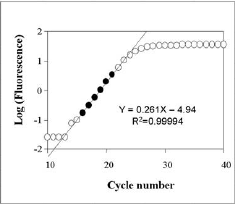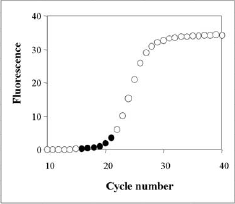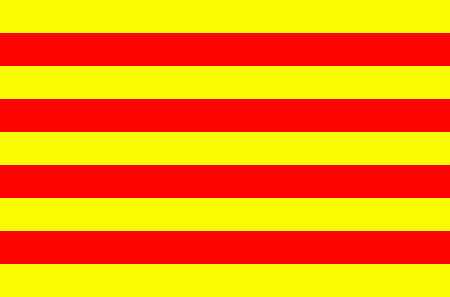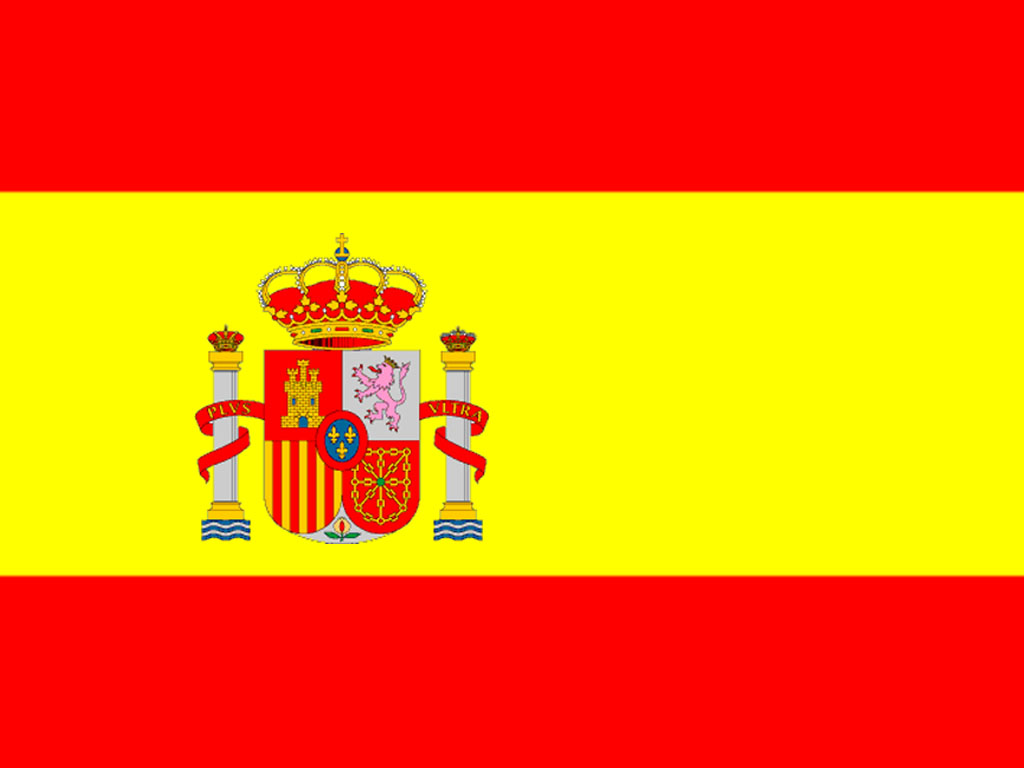Real-time RT-PCR: Efficiency calculationReal-time RT-PCR efficiencyGenerally, a PCR consists of four different kinetic stages, which are basically similar to the well-known bacterial growth kinetics as observed by Monod. In second stage it takes place a logaritmic phase, the exponential growth of PCR product --ideally, there is a doubling od PCR product every cycle-- that is measurable as fluorescent signal. The PCR kinetics in this stage can be described with the following exponential equation describing the log phase:So, the calculation of efficiency for a specific gene is calculated as: Eff=10-1/slope. Literature shows that the incorrect assumption of a 100% PCR efficiency (E=2) strongly confounds accurate calculation of gene-specific relative expression ratios, a 4-fold error leads when the PCR efficiency vary over just a 0.04 range. To calcualte efficiency of each gene, CT tool uses the fluorescence data measured per cycle throughout the amplification process. Linear regression analysis is then used to calculate the intercept and the slope from linearizated fluorescence data. The algorithm implemented to obtein the mean efficiency per gene is based on the LinRegPCR. Concretament, el procés per obtenir l'eficiència consisteix en linearitzar les dades de la fase exponencial de la PCR i determinar la millor regressió lineal. Aquest procés es dur a terme per cada un dels gens i cada mostra, obtenint un resultat específic per cada cas. Els valors finals d'eficiència per gen són el resultat de la mitja dels diferents valors de cada gen. Process of efficiency calculation consist in linearizate the exponencial phase of amplification process and determine the best linear regression. The process is going on for each gene and sample and specific results are obtained per each independent case. Finally, unique efficiency value per gene is obtained using the mean of each gene efficiency information. 

Pictures placed in right part show the program function to obtain the efficiency value. Here you could show an example of how to use the application presented next. Problems-Suggestions: [email protected] / [email protected] |
||




